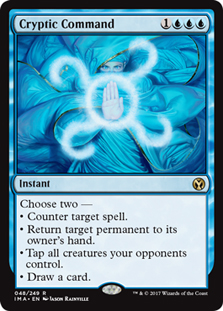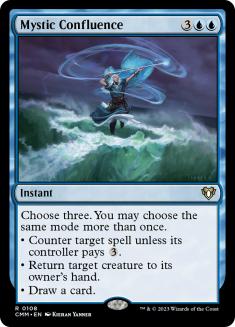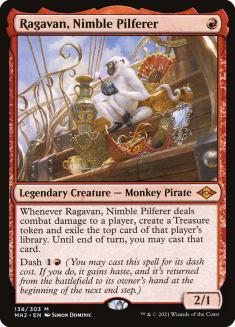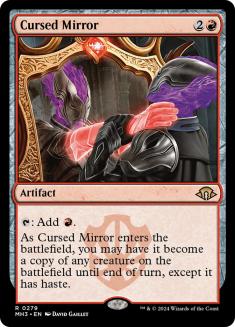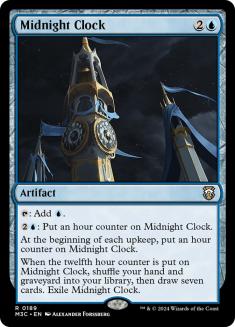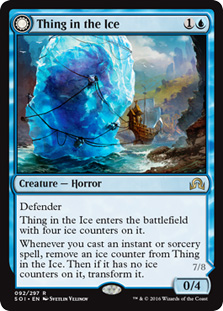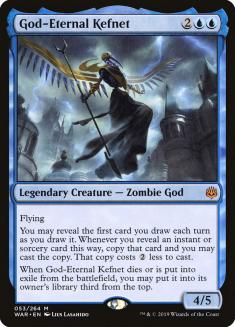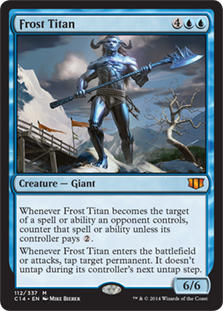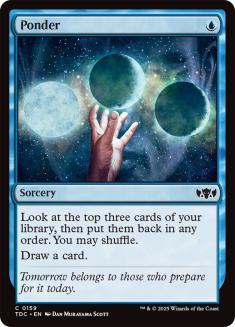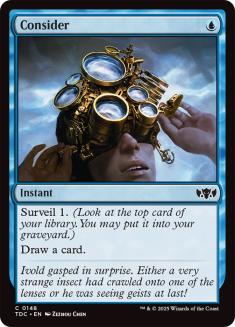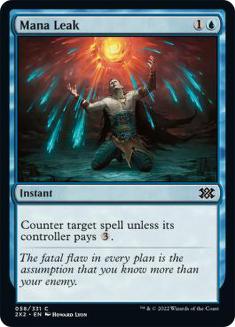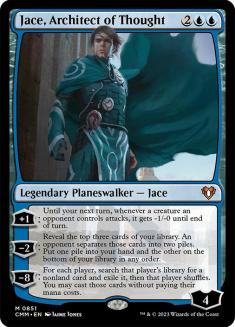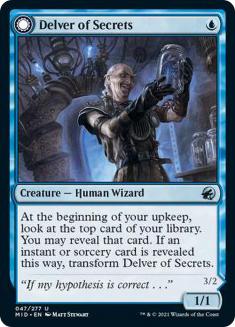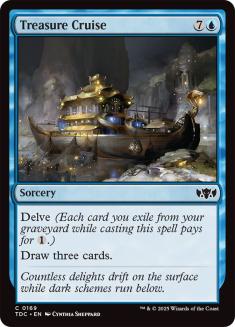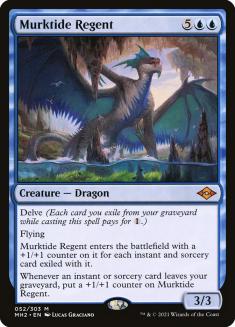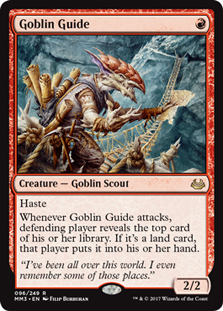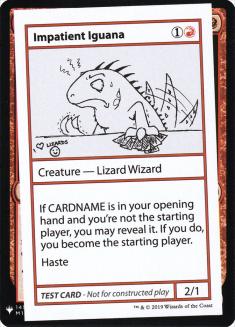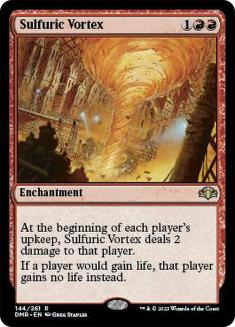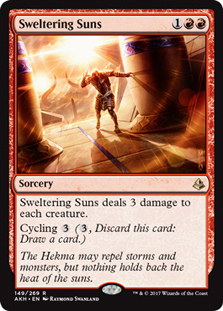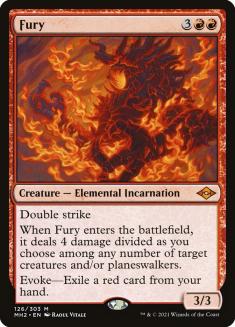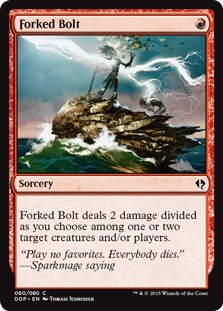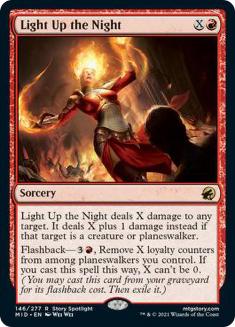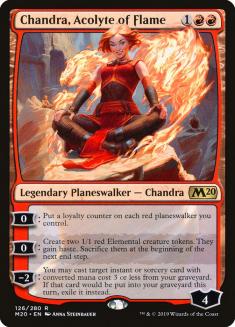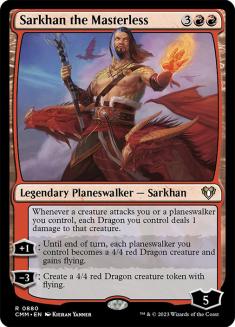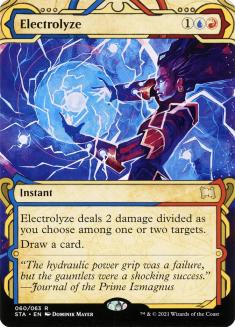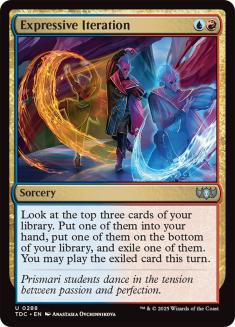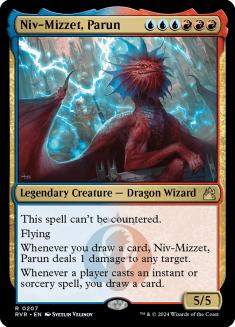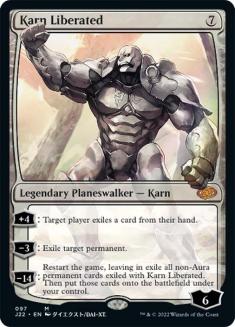I have incredible news today for Twobert fans. I’ve been hard at work on a myriad of different designs and today I get to share another with you! Not everything that I have tried has stuck, but the Artifact Twobert I shared two weeks ago has hit a lot of great notes and today I would like to introduce you to another successful project in the Izzet Twobert.
Now, you might be thinking that an Izzet Twobert is an odd choice seeing as I’ve already done Grixis. The short answer to this is that the Grixis Twobert was largely an exercise in fleshing out a combo-centric environment that benefits from a color restriction. The Izzet Twobert is a more active exercise in color restrictions.
I have a ton of history playing with blue and/or red decks, and I’ve always thoroughly enjoyed the way that the two colors play with and against each other. Blue decks historically take a passive role, trying to manage the opponent in the early-game and then winning eventually when the time is right. Red decks historically take on much more aggressive roles, trying to ensure victory as quickly as possible before the opponent can execute a more powerful gameplan. A blue deck flush with counterspells always has to ask whether it can afford to take a proactive game action, whereas red decks flush with burn spells will ask whether they can afford not to. The way that this dynamic plays out when blue decks play against red decks as well as in playing Izzet decks has been a fundamental element of many of my favorite decks and matchups.
My Izzet Twobert design is trying to capture all of those matches where I stabilized on one life against red decks with a fistful of counterspells, as well as all the times where I punked blue players with well-timed Lava Spikes. It’s an homage to the time I showed up to Lodestone with an Adeliz, the Cinder Wind Brawl deck and my friend Ian showed up with Niv-Mizzet, Parun and we didn’t leave the table for six hours. It’s the continued exploration of the infinite forms that Cubes can take, and you can find the list here.
On Color Distribution
The list looks really clean now with 60 blue cards, 60 red cards, and 60 others broken down into twenty gold cards, twenty colorless cards, and twenty lands. This was more happenstance than deliberate, and there are plenty of reasons for other two-color Cubes to break down differently. There aren’t all that many lands that you have access to with only two colors, and I could see that section growing over time, and a version of the Cube with an artifact theme or more incentives to play both colors would be right to mess with these numbers. I honestly just started putting blue and red cards that I liked on a list and over the course of refining the Cube the splits just came out clean.
On Power Level
When I say that this Cube is largely a list of cards that I like, you’ll notice a number of commonly played Cube cards have been excluded. When I first put the list together, the idea was that Mono-Red Aggro decks and Mono-Blue Control decks would exist on the extreme ends of the spectrum and there would be opportunities to draft Izzet decks that borrowed from both of these categories. In practice, the good mono-red and mono-blue decks crowded out everything in the middle, so some of the best threats as well as the best answers ended up on the chopping block so that quirkier Izzet decks could thrive.
I’m actually far more sympathetic to Ragavan than most, though it’s become clear that my playgroup doesn’t share my appreciation for the card. I’ve found that the pendulum swings both ways with Ragavan and that it can be very difficult to connect with the card against any deck that plays to the battlefield, but ultimately other players give a lot more weight to the odd runaway game that Ragavan generates. I’ll be keeping the card in the Tempo Twobert because it’s in appropriate company there, but I’ve cut it from this Cube and the original Twobert.
The Ragavan cut here was mostly motivated by the red aggressive decks overperforming though, and the solution being to trim the volume of one-mana threats some. An amusing anecdote about this Cube is that I’ve had the intention of putting together an Izzet Twobert basically since we started drafting the original model but the project lingered for a long time without more specific motivation. The catalyst to put the Cube together came from a rather unexpected place.
I had wanted to Cube with Cursed Mirror since its release and Midnight Clock has been a favorite of mine on the various Arena Cubes for as long as it’s been a feature there. I had started to look at these cards as a starting point for my own style of “Live the Dream Twobert” but that project didn’t really click for me and I eventually had the epiphany that these two cards were an exciting starting point for an Izzet environment. Neither card was terribly exciting in the original list, and that was a big part of the motivation to peel back the power level of both aggressive red cards and controlling blue ones.
Now that you’re familiar with my motivations, let’s take a look at what each color is getting up to in this Cube.
Blue
Blue is heavily skewed on the controlling and midrange side of things. When it comes to ironing out what you want your blue deck to do you’ll have your pick of some cheap threats that take some time to get going or some expensive hammers. More often than not, you’ll want a mix of these two things.
While things are fairly flexible in the threat department, most of blue’s power is consolidated in cantrips and counterspells. When it comes to one and two-mana options for these categories, most of the historically powerful options are present, and these will be the most important tools for successful blue decks of any nature.
There’s no shortage of ways for blue to try to close games or to set up powerful long-term plans, but the weakness relative to red is going to be managing opposing threats that come online before your counterspells do. I didn’t want to leave blue ice cold to this sort of thing, but some of the more powerful solutions that I tried like Vedalken Shackles had profoundly miserable play patterns, and I landed on keeping Archmage’s Charm as the big draw for being mono-blue that gave you significant game against red one-drops. Jace, Architect of Thought is another classic that isn’t totally lights out, but can be a significant starting point in turning things around against aggressive starts.
The laundry list of soft counters also lose their efficacy over time, and while there’s a good amount of support for draw-go style decks, I’ve gotten the list to a good balance where there’s enough pressure on players to at least eventually do something proactive. There’s still plenty of opportunity to sit on your hands and bully your opponent in this Cube, but not so much that you’ll feel like you’ve just lost if you can’t come online early against a blue deck.
While blue doesn’t offer a ton of aggressive support, I did convince myself to include Delver of Secrets to supplement Izzet tempo decks as well as to offer a cheap threat against some of the slower decks that the Cube generates. I think Delver is among the weakest cards in the cube, but it plays well alongside cards like Brazen Borrower and Vendilion Clique and exiles to pay for your delve spells as well as anything else.
Red
Counter to blue, red is in the Izzet Twobert ranges from very aggressive to midrange. Part of my goal for this cube was to finally develop a Twobert where Goblin Guide wasn’t embarrassing, and the diametrically opposed natures of blue and red in this cube and the relative dearth of effective blockers makes this so. I also get to put my Sulfuric Vortex back to work after cutting red aggressive cards from the Grixis Twobert, which is a huge win for me.
I’ve found it important to have some highly impactful cards for combatting red aggressive decks in the cube, and equally important for these cards to have low opportunity costs or high ceilings. I had Pyroclasm in the list for a short while but it only really lived in sideboards and wasn’t drafted highly. Compare to Sweltering Suns which just fits in a lot of Izzet midrange decks and Fury which is just generally a powerful card. Arc Trail and Forked Bolt are worth mentioning here, too, as they’re good fits for the aggressive decks as well giving them a very high rate of play.
In terms of midrange support you’ll find many of the usual suspects. Some flashy dragons and planeswalkers accompanied by a solid removal suite. My favorite micro-archetype here is a small “planeswalkers matter” package that shows up now and again and is highly impactful when the right cards come together.
I’ve also featured a few threats that can’t be countered in the cube as a measure against blue decks that try to completely turtle up behind a wall of counters. Chandra, Awakened Inferno is among my favorite cards in the cube, as costing six mana is a significant drawback in its own right, but if you commit to casting it then it offers a strong sweeper against the aggressive decks and an uncounterable threat against the more controlling ones.
I didn’t pull many punches in terms of making the red aggressive decks powerful in this cube, but I also made sure to feature a lot of red cards that are powerful against the red aggressive decks, which helps the midrange decks to carve out a space in the cube. I think there’s a solid argument to be made that Mono-Red Aggro is the most powerful archetype in the Cube when everything falls together, though even with the level of support available this is easier said than done for two-player drafts. More on that later.
Izzet
In terms of gold cards, you’ll find most of the best of all time here. Dack Fayden is the major exception that comes to mind, but the games when Dack steals an artifact are so bad that I was never going to bother with that one.
I had some reservations about Electrolyze, but it’s a nice draw to playing both colors that pushes back against the power of the mono-red decks, and I’ve found it and Expressive Iteration to be awesome draws away from the monocolor strategies. Niv-Mizzet, Parun also shows up here as another uncounterable threat and exciting endgame option.
I would also like to state that every measure that I took to make Cursed Mirror and Midnight Clock playable was just as much taken for Keranos, God of Storms. Somebody bounced the once powerful god with a Cryptic Command in one of our drafts and I was not having it. There are still some bounce spells and it’s difficult enough to land Keranos under a counter, but the cube is at a point where you can happily maindeck the card, which is good enough for me.
Colorless Cards
In my original build the red decks were so pushed and the blue decks were so focused that mana rocks were actually pretty weak, but scaling those both back and adding some more expensive cards has made them much more inviting. Ugin, the Spirit Dragon is really difficult to leverage against many of the decks that this Cube generates, but is going to be game-breaking in a midrange tapout mirror.
Walking Ballista, Batterskull, and Wurmcoil Engine are all awesome colorless tools against the red aggressive decks, and offer some nice diversity in the cube with regard to top-end threats.
The one artifact that I’m somewhat concerned about is Smuggler’s Copter. Compared to other threats it’s quite difficult to answer, especially with a low density of artifact removal being part of my angle for pushing Cursed Mirror and Midnight Clock. I’ll be keeping an eye on it, but it’s also one of my favorite aggressive Cube cards ever printed.
Amusingly, some players will point to Sword of Fire and Ice as a potential similar power outlier, but it’s just much easier to manage a Sword with removal spells, bounce spells, and also just generally with efficient gameplans. I like that Sword of Fire and Ice offers an exciting illusion of power without actually being disruptive to the environment.
Lands
I sure wish that there were more mana-fixing lands for Izzet, but I’m not one to break singleton and them’s the breaks. I have a certain loath for Frostboil Snarl and Shivan Reef, but this column is looking for adds, not cuts. You have to value lands pretty highly to have consistent two-color manabases, and I’ve considered adding some junkier lands like Evolving Wilds and Volatile Fjord, but in general the monocolor incentives are a bit too strong to play bad mana-fixing.
Beyond that, all of the creature-lands are slam dunks, and Blast Zone stands out as a cheeky option to answer a wide battlefield of one-drops or the occasional Sulfuric Vortex. I’m not usually a fan of Field of Ruin in Cube, but this cube was specifically looking for a tool against creature-lands without giving aggressive decks a tool to push a mana advantage.
Something to keep in mind when drafting the cube is that cards while Mishra’s Factory and Mutavault are great in aggressive decks, they can be just as important for controlling decks as tools against aggressive decks. It might not feel great to fire up a Mutavault to block a Goblin Guide, but sometimes it’s necessary. Also, if you’re using Mutavault for this it also means that the Mutavault isn’t in their deck. There’s a lot of back and forth around small things like that when drafting the Cube. Which conveniently is the last topic I want to tackle today!
On Drafting the Cube
Like with all of my Twoberts, this Cube is designed to be drafted either with four players using five nine-card packs, or with two players following the Minneapolis Draft style I outlined in my initial Twobert article. I much prefer the two-player experience with this Cube, and for my money it’s the most engaging design that I’ve put together for Minneapolis Drafts. A significant part of drafting cubes featuring all five colors is just figuring out what colors you’re even playing, whereas the heavy color restriction here allows you to focus much more closely on what you and your opponent are trying to do in game.
With the heavy color restriction you’ll be able to realistically play any card that you see in the draft, which allows you to heavily leverage the information you have about what your opponent is playing. This opens up a ton of opportunities for leveling and trying to construct a deck that’s advantaged against your opponent. If the red one-drops aren’t coming back to you, then this is a good indication that you should aim to be heavy on removal spells and otherwise position yourself to combat an aggressive deck. If your opponent is taking all of the counterspells, then it makes sense to try and leverage cheap or uncounterable threats. Then once you confirm your suspicions or are taken by surprise in Game 1, your sideboard will be flush with playable cards to try to once again outmaneuver your opponent!
This angle of switching roles in sideboarding and adapting significantly to the style of deck that you’re playing against was one of the elements that really got me excited about Grixis Cube years ago, and the Izzet Twobert with an even more significant color restriction amplified this. This highly technical game of cat and mouse scratches the itch pertaining to my nostalgia for historical blue and red Constructed matchups in a highly replayable way.
I love everything about this cube, from the highly technical aspect of playing it to the flavorful dynamic of blue and red as enemy colors on paper. Whether any or all of this excites you or otherwise offers some motivation for a type of cube that you want to design yourself, I appreciate you taking the time to read my thoughts here. Happy drafting.


